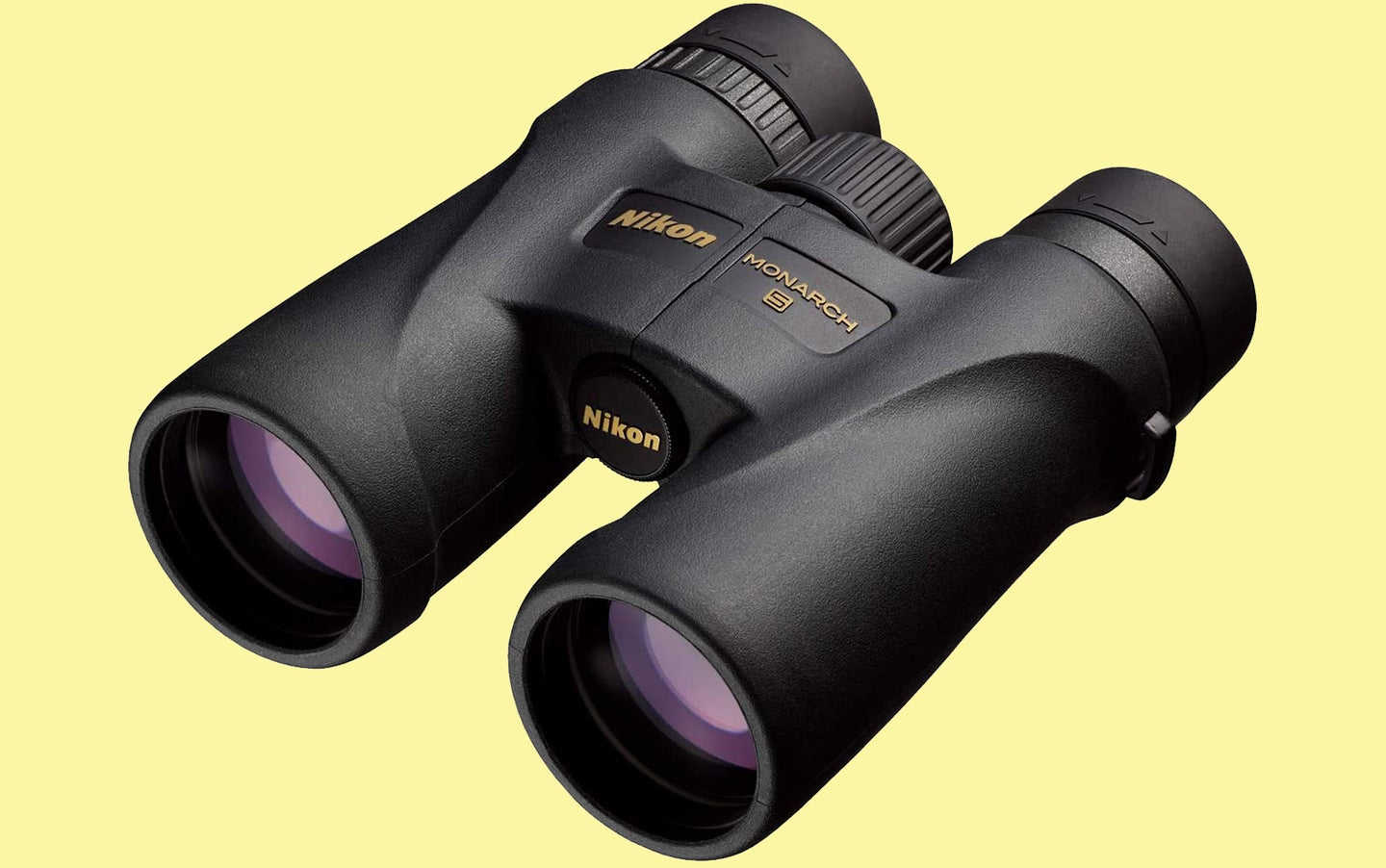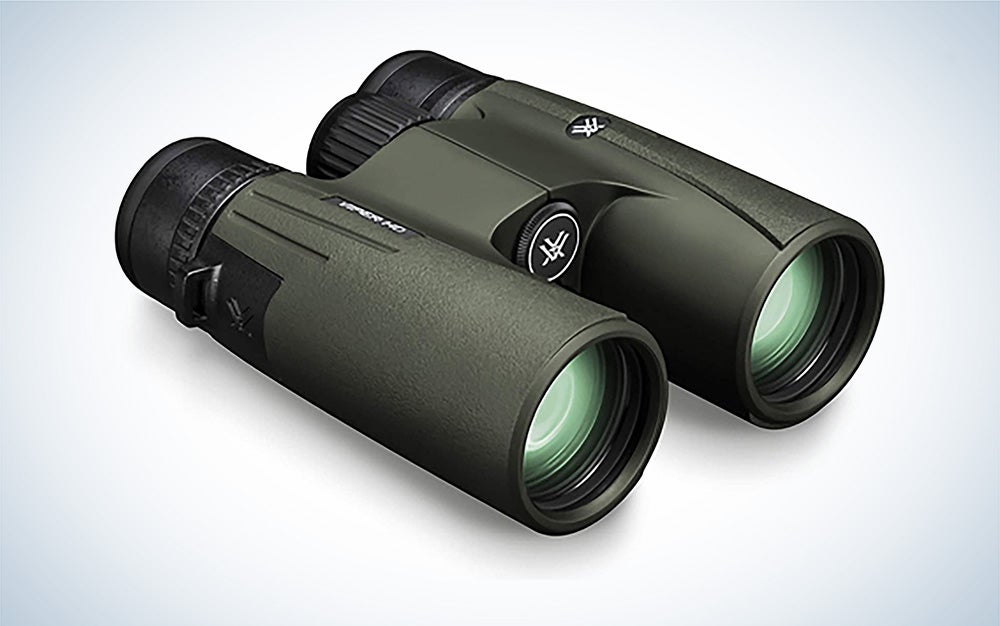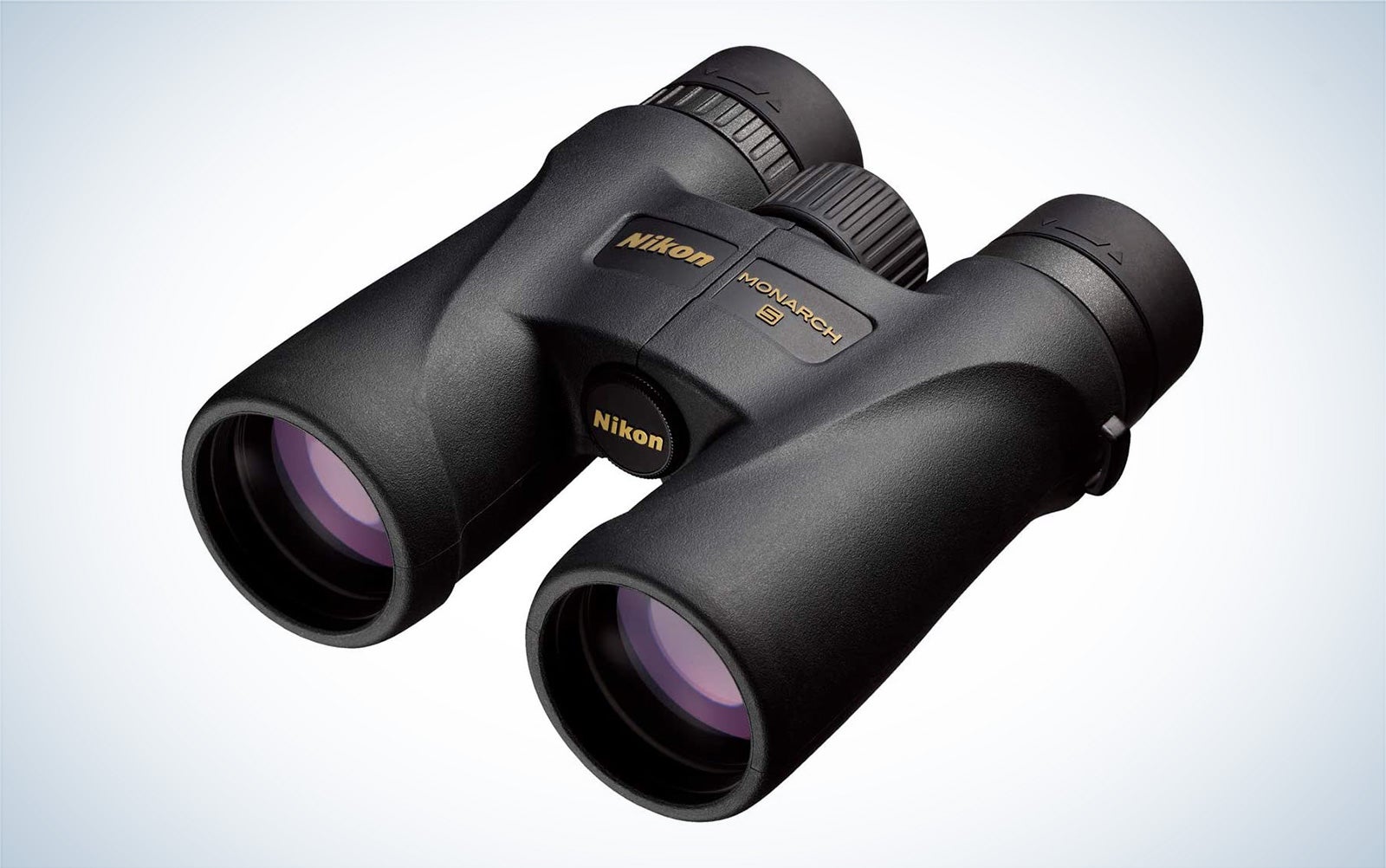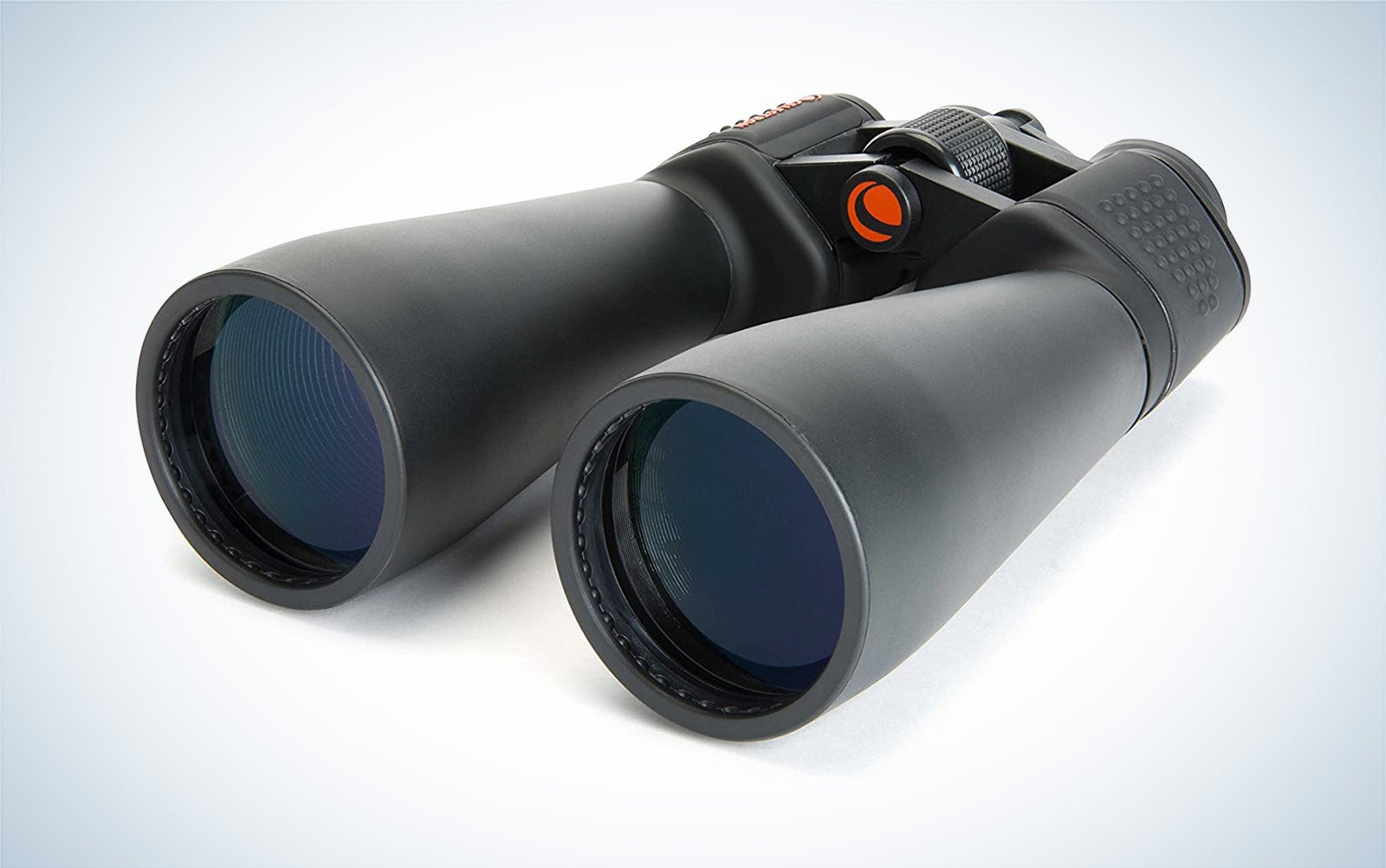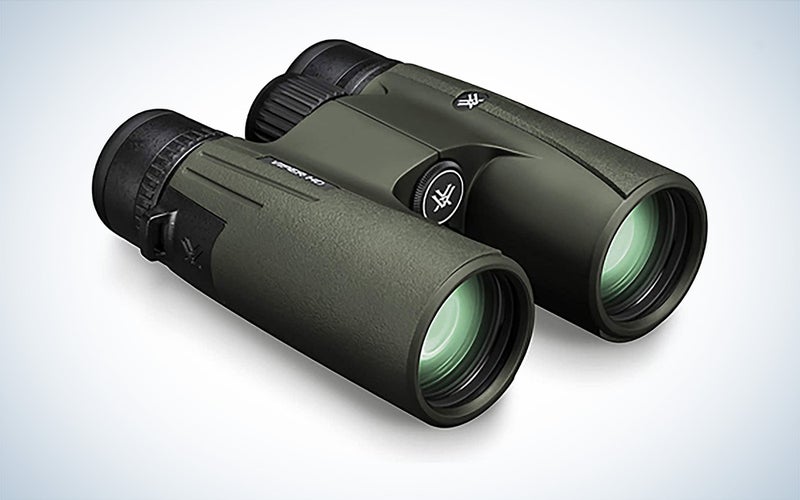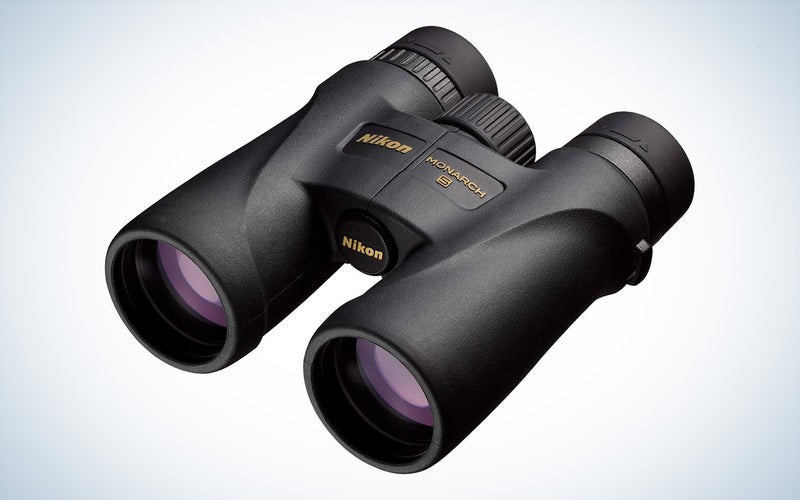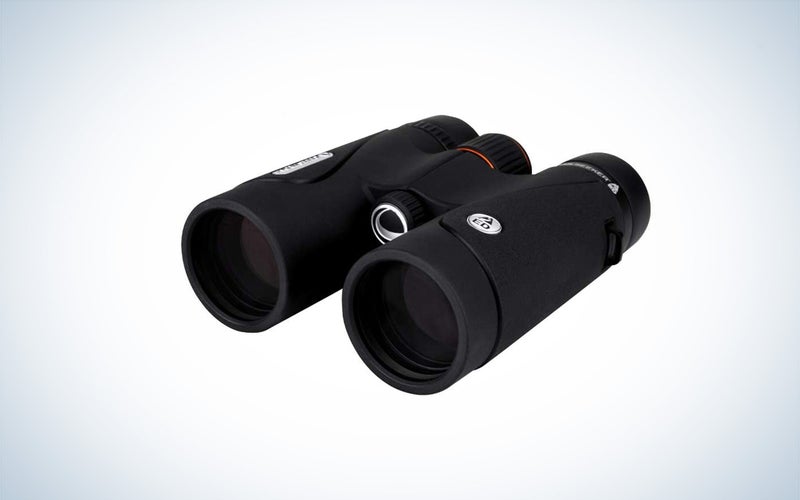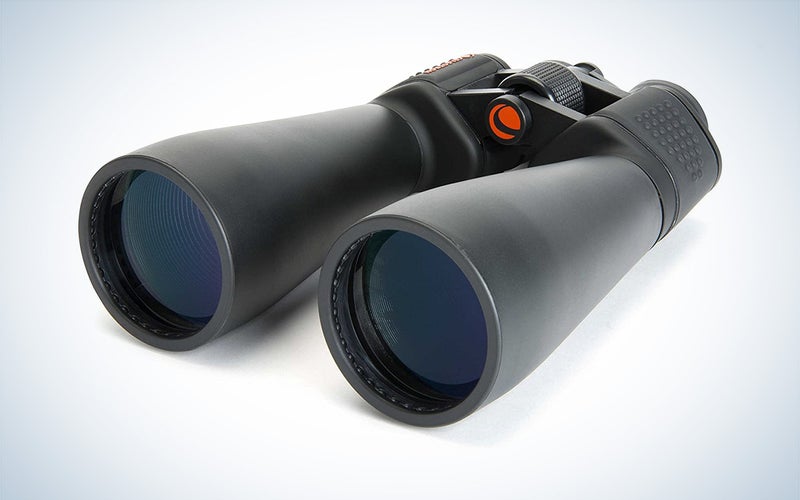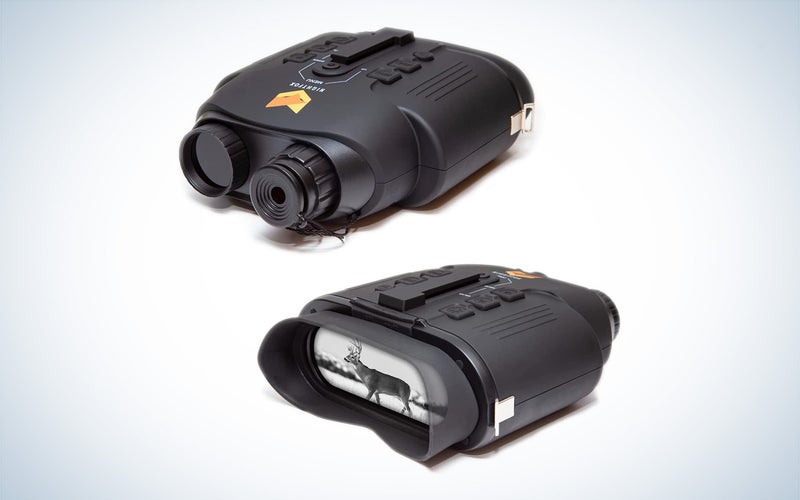We may earn revenue from the products available on this page and participate in affiliate programs. Learn more ›
If you’ve done even a cursory search on the internet for some of the best binoculars currently on the market, you’ll soon realize how challenging and confusing a task that can be. There are a few reasons for this. For starters, there’s such a wide array of models currently available and they’re available at many different price points; models can range in price from as little as $20 to more than $2,000. What’s more is that you’ll most likely come across and read about features, specs, and numbers that can easily confuse you. So, where do you begin?
Right here. We’ve created this guide to assist you in pinpointing the best binoculars for your needs.
It’s interesting to note that binoculars have been used for centuries, nearly as long as the telescope, invented by Galileo in 1609. In some ways, that’s not surprising since you can almost define binoculars as a pair of telescopes mounted together on a frame.
But there’s more to binoculars than just sticking to telescopes together. In fact, they’ve changed a lot over the years. Today, you’ll find that most models can be categorized into one of two groups: binoculars that use Porro prism and those that use roof prism (you can find more on these two types of binoculars below, in the FAQ section). Both types have pros and cons, but each allows you to use both eyes to view your subjects, giving you an immersive and compelling visual experience.
- Best overall: Vortex Viper HD 8×42 binoculars
- Best value: Nikon Monarch 5 8×42 binoculars
- Best for bird watching: Celestron TrailSeeker ED 8×42 binoculars
- Best for stargazing: Celestron SkyMaster Giant 15×70 binoculars
- Best night vision on a budget: Nightfox 110R Widescreen Night Vision binoculars
How we picked the best binoculars
For our ratings of best binoculars, we chose a range of current models at different price points. We also selected models that can be commonly bought from major online retail outlets. We then researched, selected, and tested models that included the broadest spectrum of features and capabilities, which met the needs of most users across a variety of use cases.
The best binoculars: Reviews & Recommendations
Best overall: Vortex Viper HD 8×42 binoculars
Viper
Why it made the cut: Although they are pricey, the Vortex Viper binoculars will perform very well in almost any setting, both in nature and in urban environments making them the best binoculars overall.
Key features:
- Magnification: 8x
- Objective diameter: 42mm
- Minimum focusing distance: 5 feet
- Weight: 1.53 lbs
- Dimensions: 12.5 x 10.85 x 11.05 inches
Pros
- Center focus wheel provides quick, smooth focus
- Offers a clear, bright image
- Very well constructed
- Waterproof and fog proof
Cons
- Expensive
This Vortex binocular has 8x magnification and 42mm objective lenses and comes with extra-low dispersion glass. In addition, it has XR coatings (to increase light transmission), dielectric prism coatings (for bright, clear, color-accurate images), and phase correction coating (on roof prism models for optimal resolution and contrast). Vortex says it’s also waterproof and fog proof.
The exterior of the lenses is also coated with Armortek, which is ultra-hard and scratch-resistant and protects from scratches, oil, and dirt. It also features adjustable eyecups, a center focus wheel, a locking diopter, and will fit on a tripod.
Best value: Nikon Monarch 5 8×42 binoculars
Nikon
Why it made the cut: It’s a binocular that provides very clear images and performs like a much pricier model.
Key features:
- Magnification: 8x
- Objective diameter: 42mm
- Minimum focusing distance: 7.8 feet
- Weight: 1.3 lbs
- Dimensions: 5.71 x 5.08 x 1.65 inches
Pros
- Bright image
- Comfortable
- Easy to use
- Very well constructed
Cons
- Close focus range is 7.8 feet, which isn’t as good as other models
Overall, these are the best binoculars for the money. It’s well-built, easy to use, and provides you with excellent images that are crisp, clear, and bright. Its controls are easy to use, too, and are easily adjusted. In addition, it’s also a binocular that is comfortable to hold and carry around.
One of its few flaws, which is a minor one, is its close focus range of 7.8 feet, which isn’t as close as many other models in its class.
Best for bird watching: Celestron TrailSeeker ED 8×42 binoculars
Celestron
Why it made the cut: These are the best binoculars for serious bird watchers, nature observers, and outdoor enthusiasts.
Key features:
- Magnification: 8x
- Objective diameter: 42mm
- Minimum focusing distance: 6.5 feet
- Weight: 1.44 lbs
- Dimensions: 5.5 x 4.9 x 2 inches
Pros
- Comes with ED objective lenses
- Has a close-focus distance of 6.5 feet
- Waterproof and fog proof
- Can easily connect to a tripod
- Made with BaK-4 prism glass
Cons
- Expensive
Although this model is pricey, it’s worth the price. For starters, Celestron included ED objective lenses, which results in images that are virtually free of chromatic aberration. It also allows the binoculars to have accurate color reproduction, increased resolution, and image contrast. In addition, the company used BaK-4 prisms for maximum light transmission and vivid, true-to-life colors.
What’s more, the binoculars can easily attach to a tripod for comfort and ease of use during extended viewing sessions. And it comes with a waterproof chassis that is nitrogen-filled to prevent internal fogging of the lenses. It also comes with fully padded, twist-up eyecups for comfort, as well as eyeglass compatibility.
Best for stargazing: Celestron SkyMaster Giant 15×70 binoculars
Celestron
Why it made the cut: Well-constructed, powerful binoculars that are also quite affordable making them the best binoculars for stargazing.
Key features:
- Magnification: 15x
- Objective diameter: 70mm
- Minimum focusing distance: 43 feet
- Weight: 3.28 lbs
- Dimensions: 8.7 x 4.3 x 11 inches
Pros
- High magnification
- Uses BaK4 prisms
- Performs well in low light
- Compatible for use with a tripod
- Relatively inexpensive
Cons
- Heavy
- Not as versatile as other models
With its high 15x magnification and 70 mm objective lens, which offers maximum image brightness in low-light and long-range conditions, the Celestron SkyMaster Giant 15×70 binoculars provide a lot of quality. And since it has a Porro prism binocular design, these binocular can maintain quality while also being less expensive than the competition.
It’s suitable for many different types of uses, including terrestrial or astronomical viewing. Its protective rubber covering will also give you an ultra-firm grip, while the large center focus knob allows you to quickly and easily focus the binocular. It also comes with a carrying case.
However, some might find it a bit heavy for certain activities, like bird watching. But you can easily attach it to a tripod to help with the weight.
Best night vision on a budget: Nightfox 110R Widescreen Night Vision binocular
Nightfox
Why it made the cut: These are an ideal choice for those looking for an inexpensive night-vision binocular.
Key Features
- Magnification: 7x (with 2x digital zoom)
- Power: 4 AA batteries
- Weight: 1.13 lbs
- Dimensions: 9.76 x 9.57 x 3.23 inches
Pros
- Has a range of over 160 yards
- Easy to use
- Can record video and still photos (on to a micro SD memory card)
Cons
- Image quality could be higher
This model is rated to resolve subjects in darkness as far as 150 meters. It offers a 7x optical magnification and includes the ability to use a 2x digital zoom. The Nightfox is powered by 4 AA batteries, which provide up to 5 hours of battery life. It comes with large buttons that are easy to use, even with gloves on. There is also a micro SD memory card slot, enabling you to record photos and video clips on the 110R.
Although there are night-vision models that may offer higher quality, this model does a very good job for the price.
What to look for when buying the best binoculars
Understanding the numbers
When you’re looking to find the best binoculars for your needs, it’s important to understand two numbers that often appear in the name of a particular binocular. For instance, if you’re interested in buying a binocular that has the numbers “8×42” in its name, here’s what those numbers mean:
- The first number in our example, “8x,” refers to the magnification of the binoculars.
- The second number in our example, “42,” refers to the diameter of each of the two objective lenses used in the binocular, measured in millimeters. In this case, each lens has a diameter of 42mm.
But how do you begin your search? First, determine what you’ll be using them for to help you select the right magnification and objective lenses. Then, use the following tips to help you better choose your ideal binocular.
How to choose magnification:
- 6-12x magnification: If you’re using them outdoors for birding or hunting, you’ll want to choose a binocular with magnification from 6x to 10x. You might even go for 12x magnification if you think you may want a closer view of your subjects. This magnification range is also suitable for using binoculars at various events, such as sporting events, musical concerts, outdoor festivals, parades, and more. However, you should take note that your arms will get tired after a while when holding binoculars with 10x or 12x magnification unless you use them with a tripod.
- 10x-20x magnification: If you plan on using your binoculars for stargazing, look for one that has more magnification, anywhere from 10x to 20x magnification. Of course, the higher the magnification means you’ll bring objects visually closer to you, but you’ll also have a narrower field of view. In other words, you’ll see less space around the object you’re looking at. Another downside of higher magnifications—you’ll end up with a heavier setup. So, you might want to buy a tripod and mount your binocular on the tripod for stargazing.
How to choose the right size objective lenses:
- 30mm-50mm: Look for models with objective lenses in this range for most types of uses, including birding, hunting, travel, sporting events, concerts, etc. It’s why most of the binoculars in the recommended list are in this range. The upside in having larger-sized objective lenses is that they let in more light, which can be helpful for use in low-light situations, like during sunrise, sunset and dusk, or in forests. However, like high magnifications, larger objective lenses also increase the weight of the binoculars.
- 50mm-80mm: If you’re using your binocular for stargazing, look for objective lenses in this range. As noted above, these larger objectives will let in more light but also make them heavier.
FAQs
Q: What’s the difference between Porro prism binoculars and roof prism binoculars?
The difference in the two types of binoculars refers to the arrangement of the prisms inside the binoculars, which affect the path of light. Binoculars that use roof prisms maintain what appears to be a straight path of light from the objective lenses back to the eyepiece lens. Binoculars with Porro prisms have objective lenses offset from the eyepiece lenses. In other words, the light path is folded inside binoculars with Porro prisms.
Q: How are night vision binoculars different from regular binoculars?
There are a few significant features that distinguish night-vision binoculars from regular binoculars. For starters, they come with the ability to shoot a beam of infrared light at a subject, which reflects off it in the dark and allows you to see it via your night vision binoculars. Additionally, night vision binoculars use a combination of both analog lenses and digital technology (such as an LCD) to see objects in the dark. That’s why most night-vision binoculars also need some sort of battery power to use them, which is also different from conventional binoculars.
Q: Are there other terms or expressions that are important to know about when buying binoculars?
In addition to the terms and expressions we mentioned earlier, the following are a few more that can be very helpful when buying binoculars:
Angle of view/field of view: There are two expressions that indicate the width of the area you can see with your binoculars. One is an angular field of view, which is more commonly known as angle of view, and it’s expressed in degrees. The other is known as field of view, and it’s expressed in feet. In either case, they both refer to how much space you can see around your subject—is it wider or narrower? If you’re using binoculars to see wildlife or a sporting event, like a soccer game, there’s an advantage to having a wide field of view—you can see if an animal is coming closer to the center of your binoculars. But if you have a narrow field of view, it may limit your ability to pick up on moving animals or soccer players, which may be outside of your limited viewing area.
Eye relief: This is the distance between your eyes and the binocular that allows you to see the entire field of view. (Note: A larger eye relief number allows people with glasses to wear them while still using the binoculars.)
Close-focus distance: This indicates how close you can bring your binoculars to a subject and still be able to accurately focus on it effectively. It’s generally measured in feet. Many models are now able to have a close focus range under 10 feet, and some are as close as 5 feet.
Waterproof / water resistant: Many models are described as having either a waterproof or water-resistant exterior, which keeps water and moisture out. As a reminder, the two words have slightly different definitions: “Waterproof” means that water will be incapable of getting into that product, in this case, binoculars.
“Water-resistant” offers a lower level of protection from water and moisture than what you get with something that’s “waterproof.”
A final word on caring for your binoculars
Whether you’re buying a top-of-the-line binocular or a budget model, you want to make sure it lasts a long time. Follow these steps to help keep yours in good working condition:
- Remove dirt by gently brushing it off all metal parts. Use lens cleaning tissue or a soft brush on the lenses, being careful not to scratch the lenses. If you see any oil on the lens, clean it with some lens cleaner (by adding it on to the tissue) and use a circular motion to wipe the lens.
- Be sure to examine your binocular to see if it’s clean and in good working order.
- When hiking or traveling with your binocular, don’t let them swing when you’re walking with them; always use a strap.
- Always put the caps over the lenses on your binocular when not in use.
- Don’t leave your binocular on the seat of your car when driving. If you stop short, you could damage them.
- If you see dust or dirt inside your model, contact the manufacturer to get the binocular repaired. Don’t try to open it up yourself.
- After using your binocular, store them in the case that came with your model.
